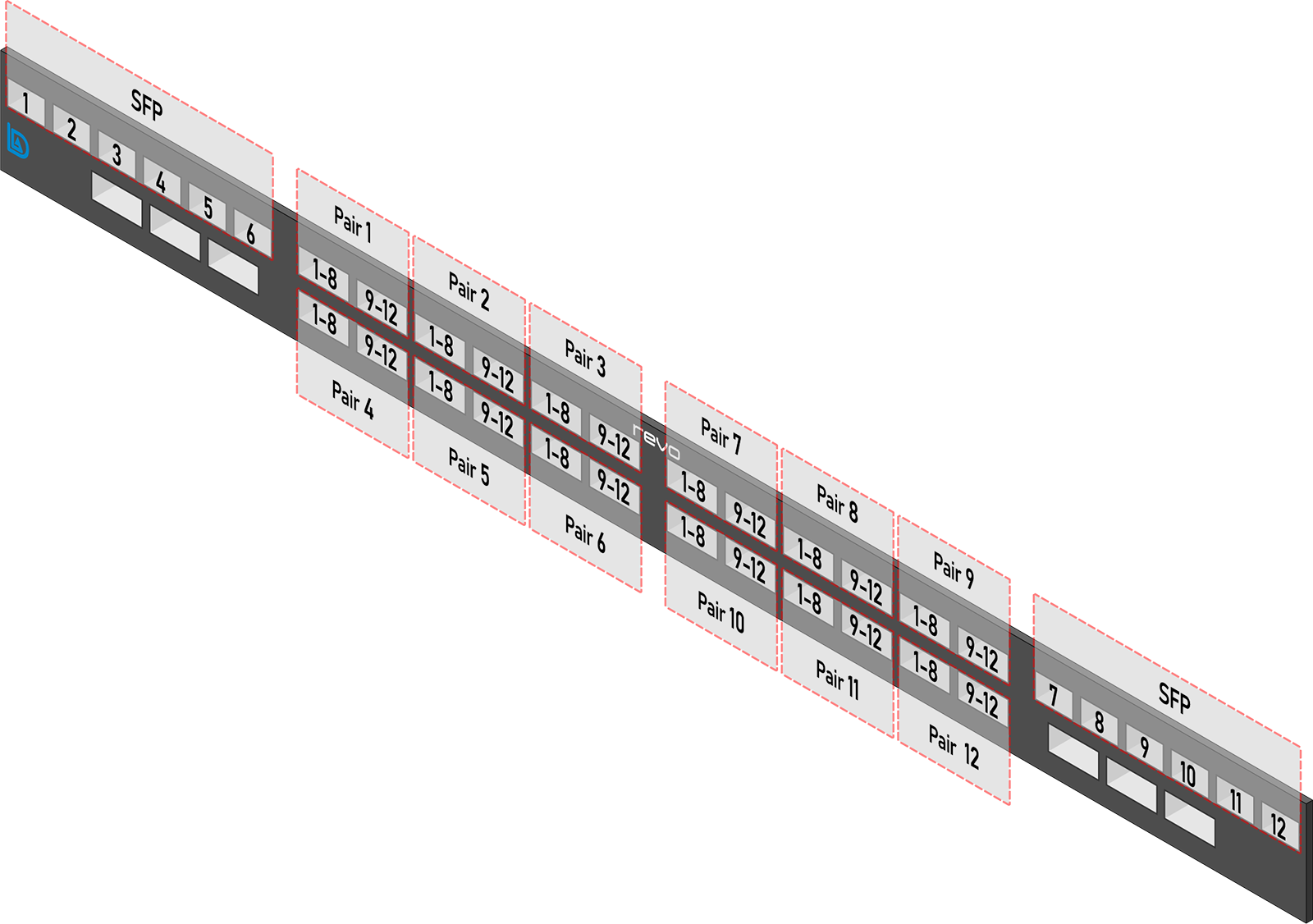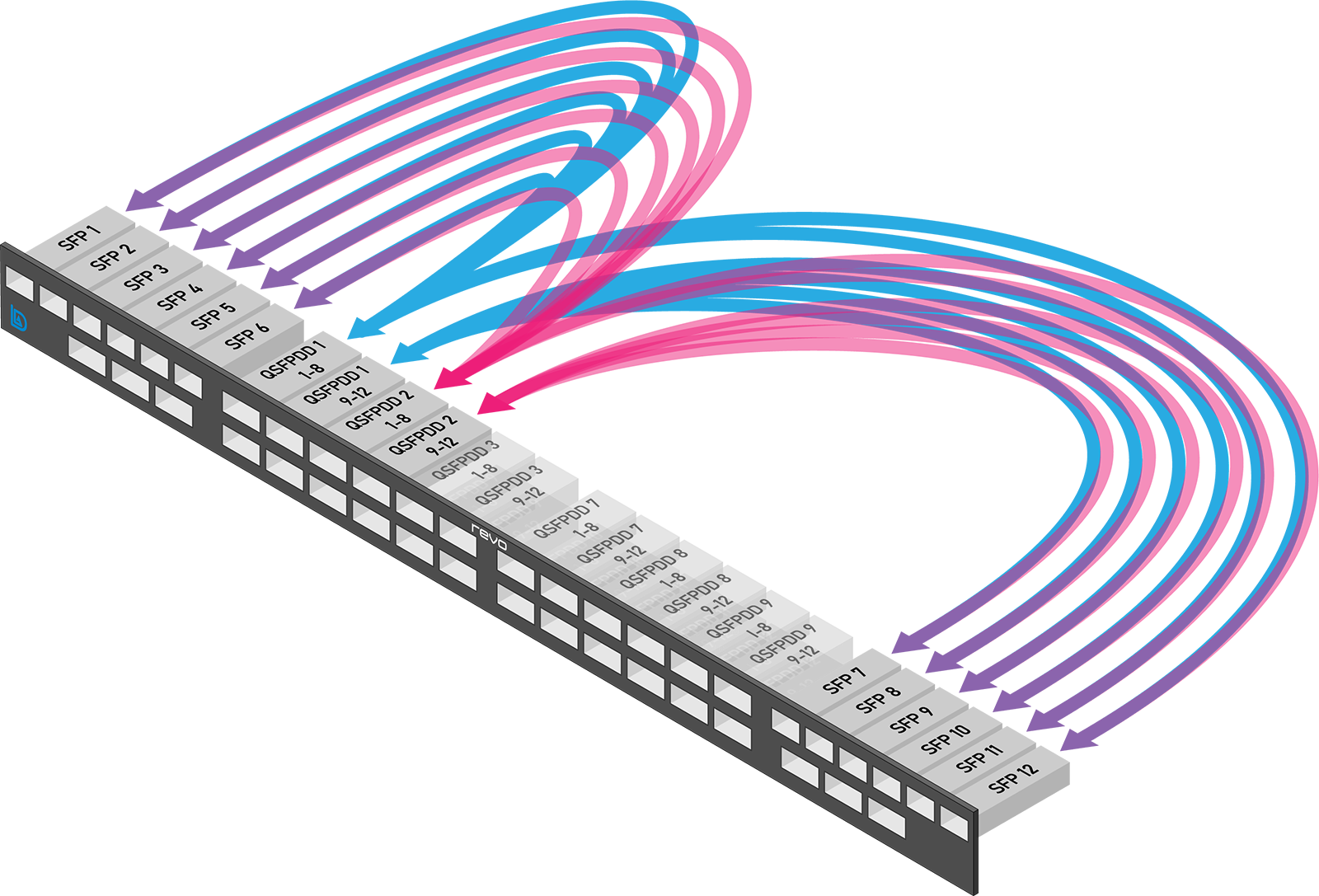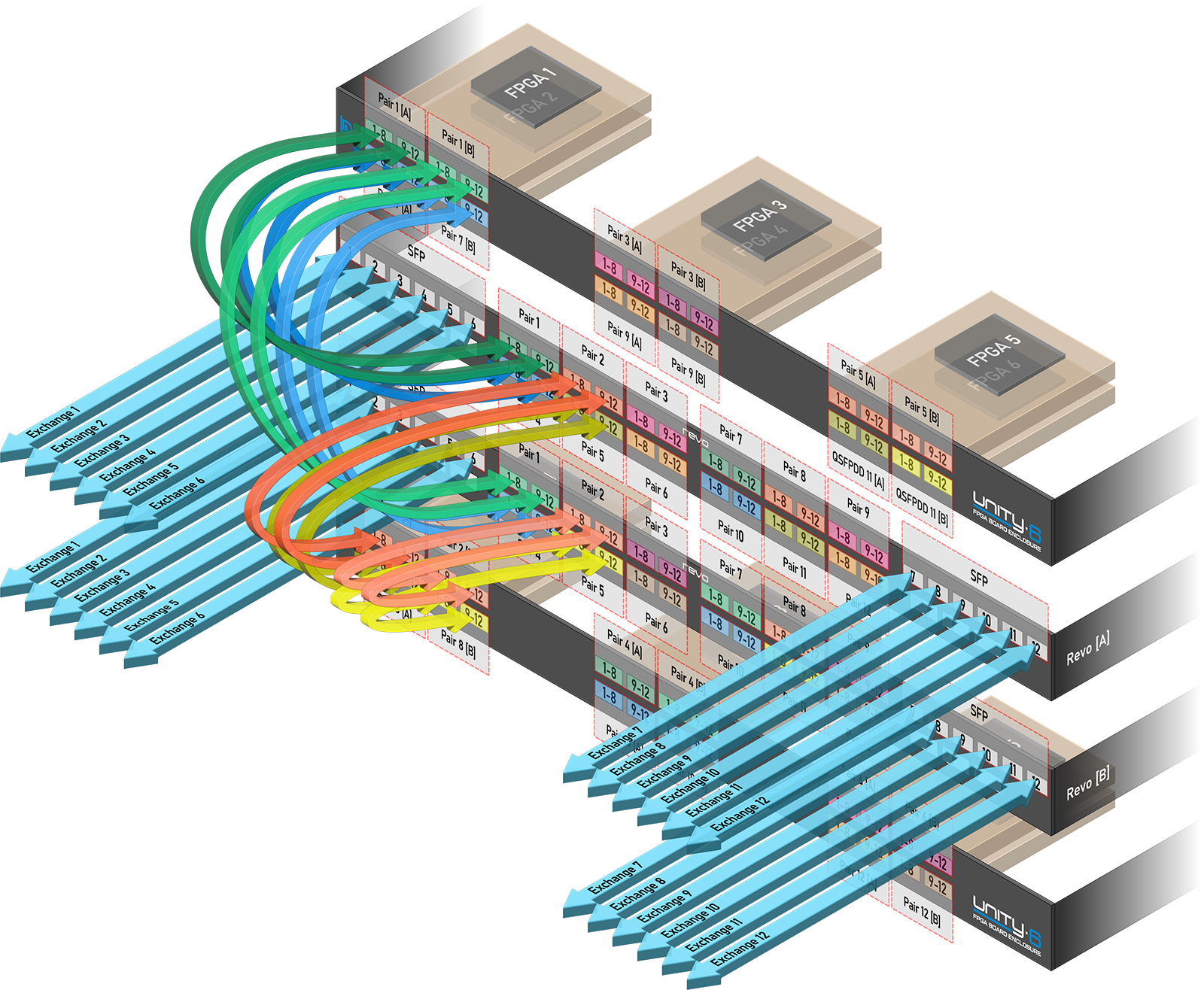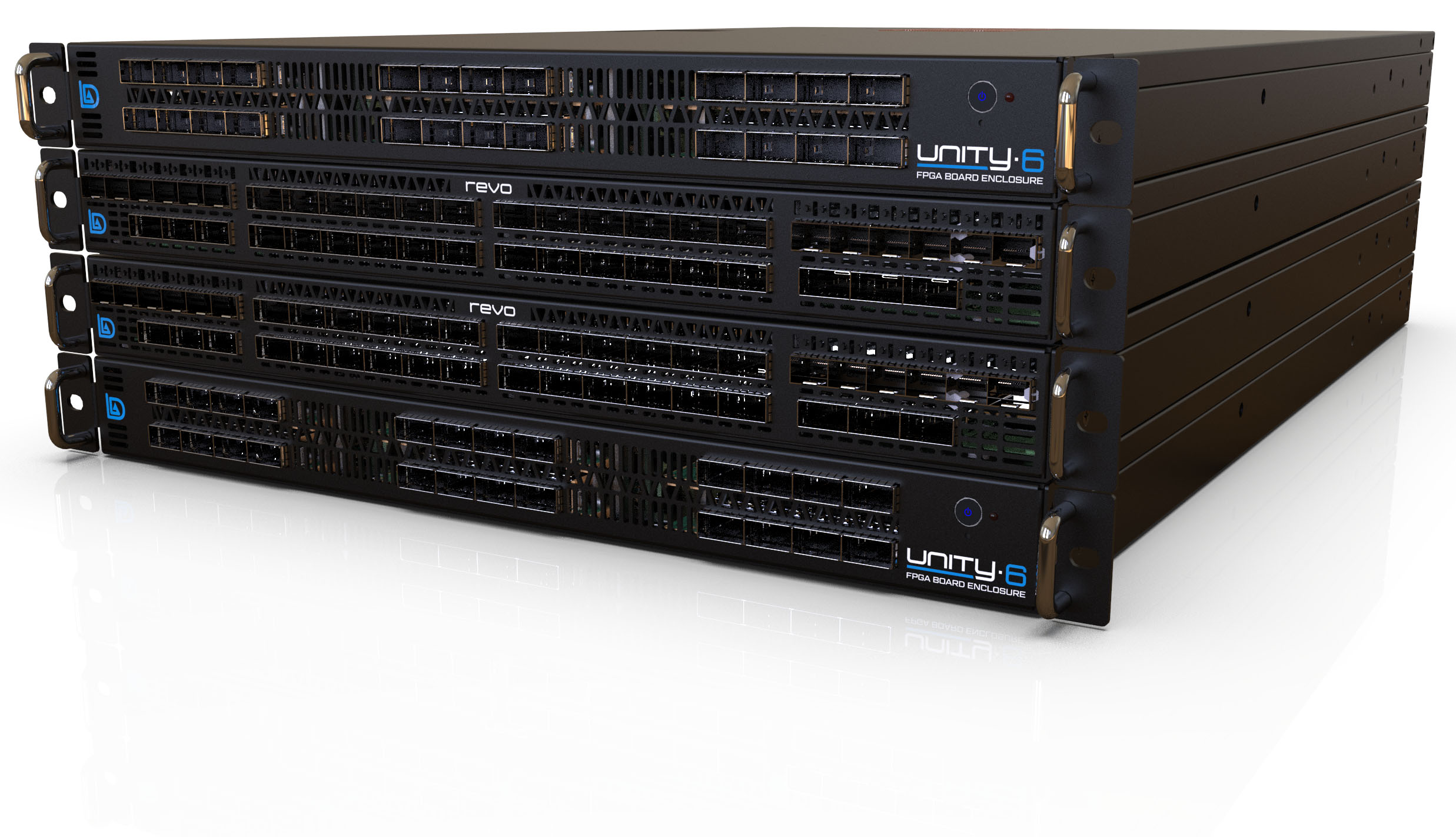LDA Technologies' latest addition to the fleet is a new, specialized Layer 1 device that simplifies arbitration of multiple lines in ultra-low latency trading.
The Why
Let's look at a use case. You need to:
- Receive up to 24 separate 10G lines from exchange(s)
- Deliver the data from each line to 12 FPGA boards
- Enable each FPGA board to send data to any line
That works out to 24 + 24*12 = 312 10G ports, and let's not forget the housekeeping ports that these setups would usually need, which drives the total number of links closer to 350-360.
You're probably picturing a rack with at least four 2RU Layer1 switches, 3-6 servers and an unmanageable weave of long cables connecting everything, as well as insanely complex connectivity diagrams and switch configurations. Not to mention that the average latency of at least 20-30 ns one way would, in many cases, defeat the whole purpose of the exercise.
Enter the LDA Revo: a device that allows the whole setup to take 4RU rack space, with the longest cable being 7" and average one-way latency of 3.5 ns.

The How
The Revo is an aggregate of various technologies that LDA has created. It's hosted in the standard LDA Unity6 chassis with a customized front panel, and at its core is a blend of LDA NEO and D6 Mark II platforms - working together to create a specialized Layer 1 system. A 1U chassis with 12 SFP+ ports, 24 + 6 QSFPDD ports and LDA FPGA board is also available.

- 12x SFP+ ports are available for exchange connectivity. These are replicated to 12 different QSFPDD port pairs, with one link in each pair.
- QSFPDD ports (12 pairs) are for FPGA board connectivity. 6 FPGA boards can be connected to one Revo device and get a copy of all 12 SFP+ links.

- SFP+ output can be configured via Layer 1 so that each FPGA board can send traffic to two SFP+ ports.
- 6x QSFPDD ports are for housekeeping/management purposes. Each link on the board can be directed to any of these ports via Layer 1 for external timestamping/capture.
- An LDA FPGA board that runs one of LDA's standard networking products can be installed in this device, providing extra functionality such as capture and monitoring via LDA NeoTap tap aggregation/timestamping solution, etc.
- Most importantly: the Revo removes all the cabling complexity! All connectivity is done with 2" -7" QSFPDD copper cables.
The Setup
Returning to the original use case: how would we set this up in a rack?
First, each device can handle 12 lines from the exchange, so we need two devices to take all 24, positioned as close to each other as possible.
Then we need to place 12 FPGA boards as close as possible to distribution devices. For this, we use LDA Unity6 chassis with standard hardware configuration. Each Unity6 can hold six PCIe FPGA boards in 1U, all facing forward for the shortest and simplest cabling. We put one at the top and another at the bottom, taking 4RU total rack space.

To fully cover the "24 exchange link" use case, each FPGA board must have 4 QSFPDD ports. To fit in 4U and maintain the shortest possible cabling, FPGA boards should have single-slot heatsinks.
We recommend our own Panther (Virtex Ultrascale Plus) or Orion (Versal Premium) series FPGA boards.
Boards from other vendors that meet these criteria will work as well. We can provide installation kits if the boards are from known industry providers. If the boards are from other manufacturers, we will provide instructions for you to install them yourselves.
If your preferred FPGA boards are double-slot, you can only install 3 in each Unity device, in which case you will need four chassis to hold all 12 boards. This will push the whole solution to 6RU total with slightly longer cables.
With this setup, you will have a linear distribution of 48 ultra-short cables - your network team will love it! As will you when you experience the resulting latency.
